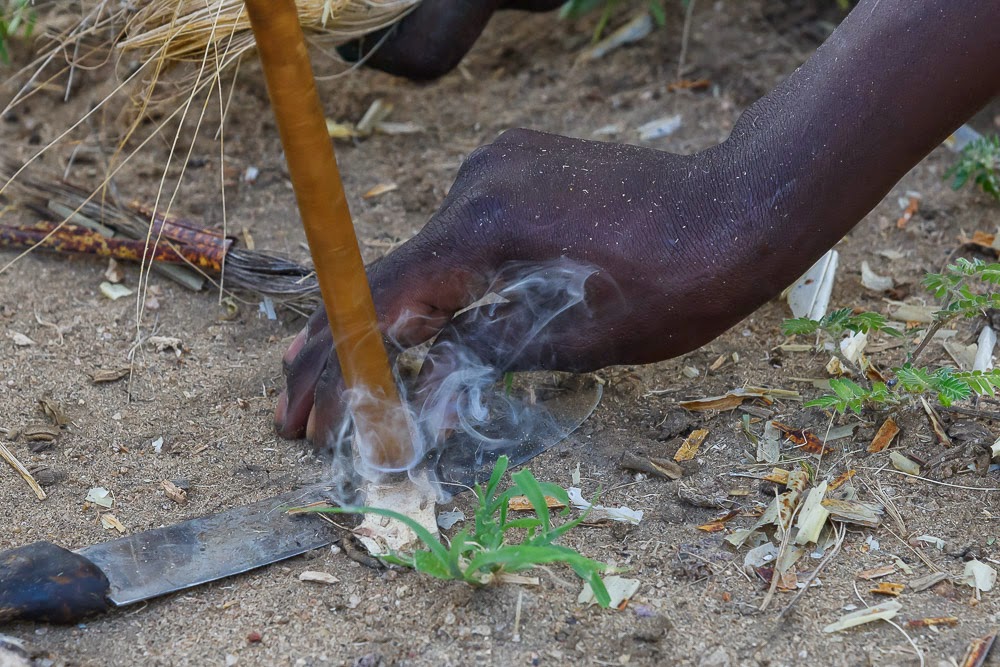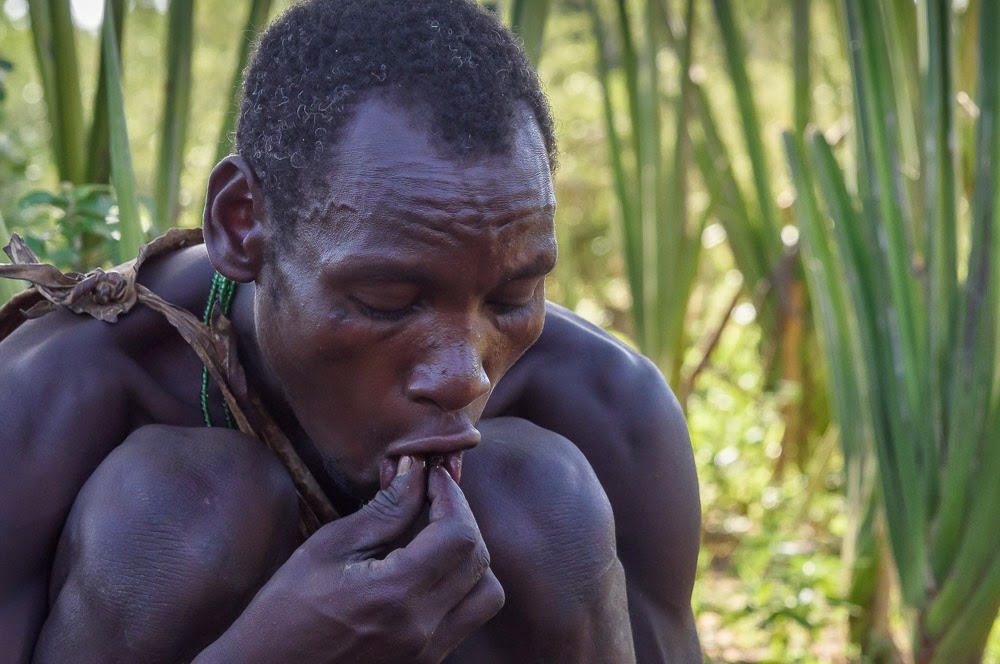Near the "cradle of mankind", in the Great Rift Valley of Africa, about 700 people still live as "hunter-gatherers" such as 10,000 years ago. In the dry savannah, northeast of Lake Eyasi in Tanzania, the Hadza eke out their meager existence. The men as hunters with bows and arrows and women as gatherers of berries, honey, fruit of the baobab tree and tubers.
On a recent trip to Tanzania I have visited a group of Hadza and accompanied them on the hunt in the early morning.
When I arrive at their place, some men and women already sit around the warm glow of the fire while most of the members of the tribe are still sleeping. Gradually, they come out of their simple huts made of agave, covered with leaves, and join the warming fire. They talk in a peculiar click language and most likely discuss who goes hunting.
Suddenly three hunters jump up and disappear in the thicket of the bush. I follow them with my guide on their two-hour hunt through thickets, thorn bushes and tall as a man Agave with pointed leaves. They are quick and agile - we must work hard, not to lose sight of them.
With incredible precision they shoot their arrows at the animals they find in trees or bushes. Most are small birds or rodents. With fortune also baboons, antelopes and zebras or maybe even giraffes. In between one of the hunters climbs a huge baobab tree to enter the open-top trunk to a water supply from the last rain. With a drinking vessels, made from a hollowed-out fruit of the tree, they quench their thirst.
They are not very lucky and did not hunt enough to share it with those who remained behind. So they decide to eat the captured birds on the spot. Within a short time they start a fire by rotating a hardwood rod between hands on a rotten piece of wood. After a few minutes the fire burns, on which the coarse plucked birds are roasted. Of course, I am offered a part of the booty, and I am not unhappy that they hunted birds and not a monkey.
It's amazing how this small group of people could withdraw the influences of civilization for so long . The only visible influences are pants and partly T-shirts for men and colored fabrics for women. On the hunt many still wear skins of captured baboons. Jewelry, knives, arrowheads made of iron are traded with the neighbouring tribes.
More images:



















As usual- very nice set of photos. I really like the one with the hunter posing with his bow and arrow. It is great that someone can document the lifestyles of theses people who may not be able to maintain in the near future.
ReplyDeleteGreat blog Rudolf! Great images!
ReplyDelete